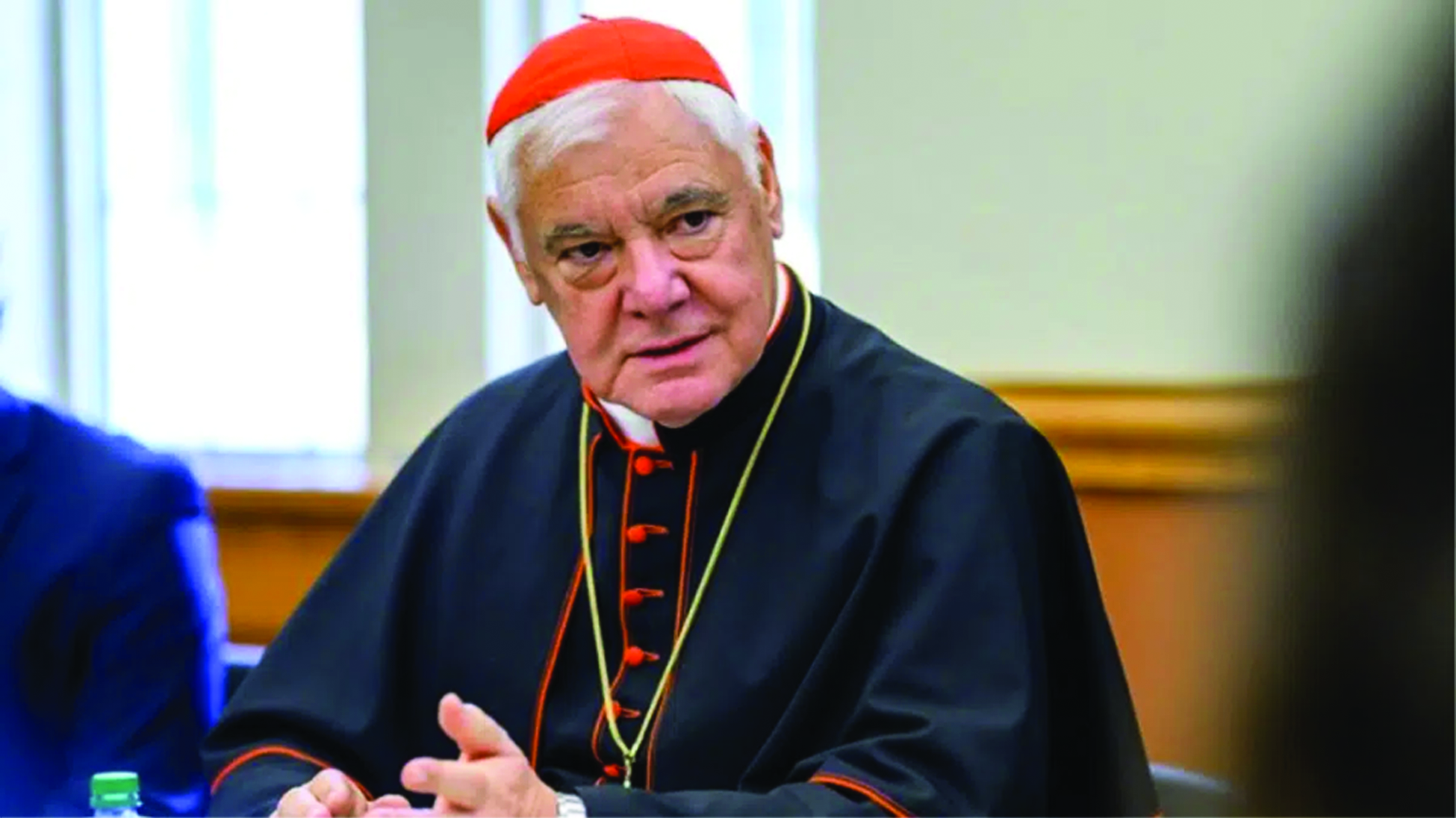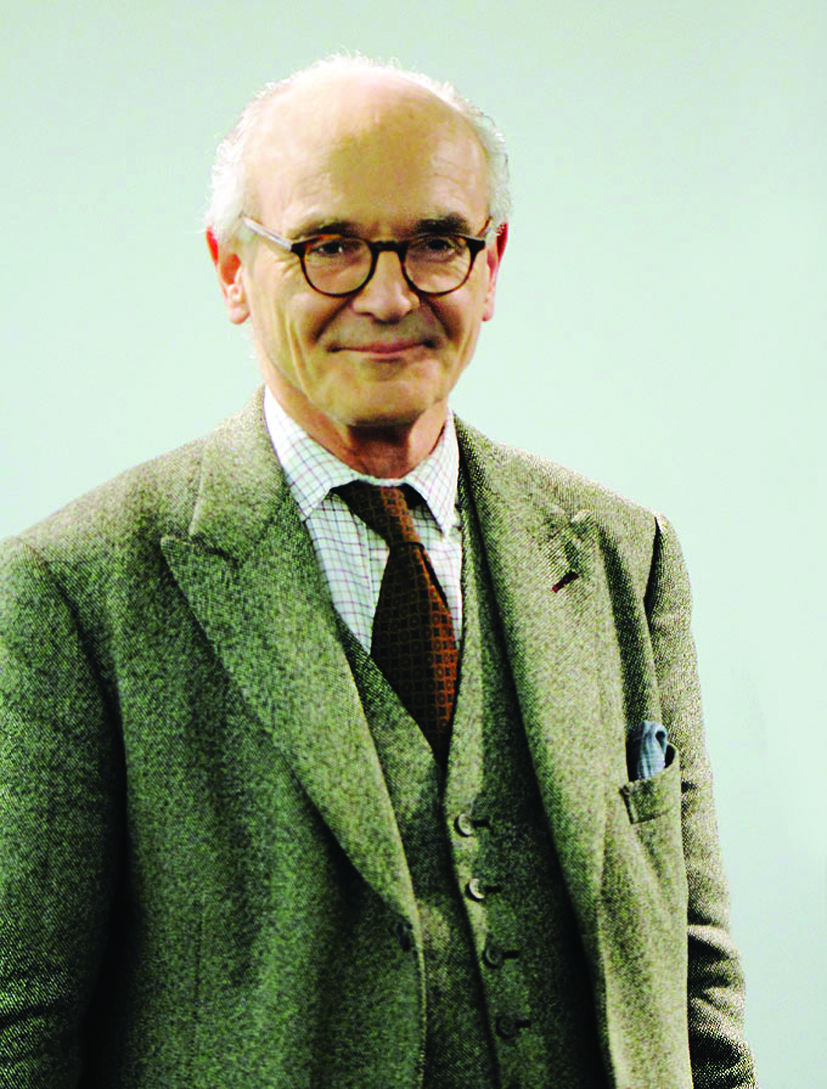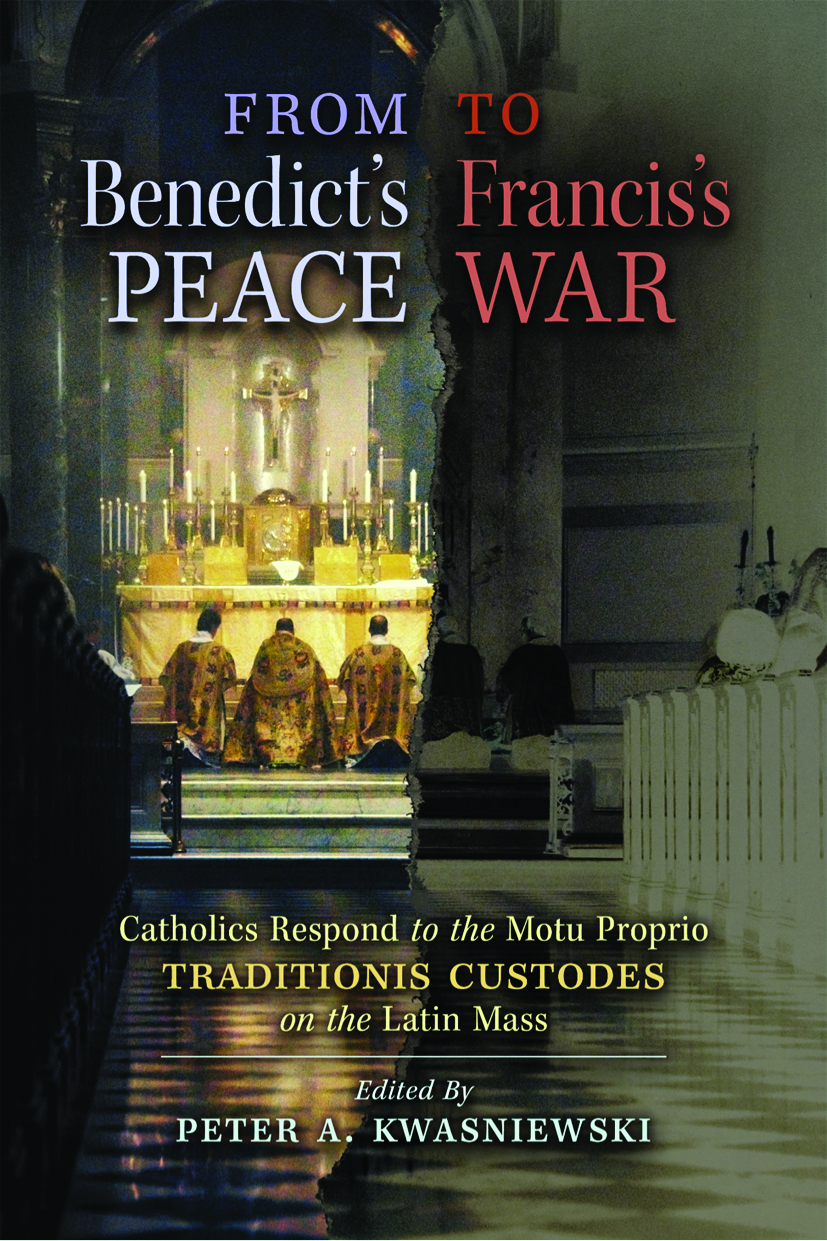By Lucy Gordan
Monsignor Pasquale Iacobone was born in 1959 in Andria, a city near Bari, in Puglia, on the southern heel of Italy. He came to Rome in 1978 to study at the Jesuit Pontifical Gregorian University, where he completed all his studies, including his doctorate, in 1996. His thesis was on dogmatic theology in art, specifically the iconography of the Trinity during the Middle Ages. It was the first thesis on an artistic subject at the Gregorian, where Iacobone, ordained in Andria on April 22, 1984, still teaches.
In 1996 Cardinal Poupard, the then- president of the Pontifical Council for Culture, called Iacobone to work under him with duties always connected to art. When, in 2007, Cardinal Ravasi, still a bishop then, became the president of the Pontifical Council for Culture, he asked Iacobone to head the newly-established “Department of Art and Faith.” Iacobone would pay particular attention to contemporary art, to public relations with its artists, and to art’s future direction. Now he is the Vatican’s lead person for a global exposition in Milan that focuses on food around the world…
Besides “Art and Faith,” what are the other departments of the Pontifical Council for Culture?
Msgr. Pasquale Iacobone: The other two principal ones are the “Courtyard of the Gentiles” and “Science and Faith.”
“Courtyard of the Gentiles” promotes dialog between believers and non-believers, between Christians and agnostics, between Christians and practitioners of other faiths. “Science and Faith” examines the rapport between science and faith, especially in new fields like neurological and genetic research. Our youngest department concerns sports, emphasizing their cultural values.
Which “Art and Faith” past projects did you organize and which projects are underway now?
Iacobone: Cardinal Ravasi and I began by launching events that had been Pope Paul VI’s dream: to inspire the Church to patronize contemporary art and artists as it had done during the Renaissance.
Our first major initiative was Benedict XVI’s encounter in the Sistine Chapel with 300 artists from all over the world and from all fields of art. It took place in 2009 on the tenth anniversary of Pope John Paul II’s Letter to Artists.
Our second initiative was a celebration of the 60th anniversary of Benedict XVI’s ordination. We invited 60 artists to present their works to the Holy Father on July 5, 2011.
The next event was the Holy See’s first pavilion in 2013 at the Biennale in Venice. The Holy See had had pavilions at World Fairs since 1851 in London, but never before at the Biennale, one of the most prestigious international venues devoted to contemporary art. Cardinal Ravasi chose “The Creation” in Genesis as our theme.
This year we’ll have a pavilion at 2015’s Biennale. Our theme will be the verse “The Word was made flesh, and dwelt among us” (John 1:14). One such example of forgiveness and mercy is the parable of “The Good Samaritan,” a theme dear to Pope Francis. Our other project is Expo 2015.
“Art and Faith” usually launches an idea for possible artistic initiatives. We hope our suggestions will inspire the Church at a national or a local level to make the necessary contacts, put our idea into action, and then to develop and complete it.
You’re the vice-commissioner, under Cardinal Ravasi, for the Holy See’s Pavilion at Expo 2015?
Iacobone: Yes, I’m his delegate. Now the architects — Quattro- associati in Milan — and I are working on the pavilion’s interior design. We’ve elaborated a statement, which explains the reason for the Holy See’s presence at Expo. You can find it, as well as a calendar of our events and encounters, on our website: www.expoholysee.org. It is: “Not by bread alone does man live, but by every word that proceeds from the mouth of God.” This statement, chosen by Cardinal Ravasi, as well as “Give us this day our daily bread,” will appear on the pavilion’s facades in 13 different languages.
We care about the nutrition of the whole person. We don’t feed only the stomach; we feed the heart and the mind too. Yes, with “Not by bread alone” we aim to nourish our planet, but also every dimension of humanity, not only through food.
However, “Not by bread alone” for people of foreign cultures and religions could have negative connotations. “Give us this day our daily bread” from the Lord’s Prayer speaks “visually” about physical nourishment and signifies that the Holy See is concerned that everyone on this planet has enough food to eat. It’s a direct dialog between God and man. Bread is a sign of God’s love and of his teaching. We’re asking God for his love and solidarity, which then becomes part of our lifestyle towards others less fortunate.
What does the Pavilion look like?

Will it have a store? A restaurant?
Iacobone: No. Ours is a pavilion for reflection.
Can you describe the Pavilion’s four different sections?
Iacobone: 1) The Table: for solidarity and communication between cultures; 2) The Last Supper; 3) The Problems of the Environment like water shortages, global warming and hunger; and 4) The Garden: protect God’s creation, nature. Our exhibits will be ecumenical and universal. At the pavilion’s entrance there’ll be a series of photos, some projected, others hung on the wall, that put before our eyes situations that don’t have an easy solution: how to alleviate hunger and thirst and all other types of hunger from loneliness to illiteracy, the world situation in all its cruel realities. They’ll show greed, pollution, waste, erosion, droughts, war, poverty, loneliness, etc. Taken all over the world, they’ll call attention to the serious problems we need to concern ourselves with. These photos will be connected to Pope Francis’ concerns with the “globalization of indifference,” “the culture of waste,” “a Third World War already underway.”
The second section is the far wall on which we’re hanging two works of art: for the first three months, an untraditional, dynamic Last Supper by Tintoretto on loan from the Church of San Trovaso in Venice, and, for the second three months, a huge tapestry of the Last Supper designed by Rubens, on loan from the Diocesan Museum in Ancona. The Last Supper, the Eucharist, is the fulcrum of the Christian experience; sharing a meal is an important step of expressing solidarity towards others.
We had to choose artworks that were easily transportable to Milan; part of the Church’s patrimony, not a loan from outside; but also of an episode in Jesus’ life that non-Christians could easily recognize; and by world-famous artists. The third section projects three short videos of concrete charitable projects promoted by the Pope in Iraq, in Burkina Faso, and in Ecuador. Our three teams filmed local realities where solidarity, Christian charity, the commitment to education all persevere under extreme circumstances. We aim to highlight the possibility of bringing about fellowship, solidarity and charity, renewing hope and faith, instilling Christian values, and thereby nourishing humanity and the world, where such success seemed doomed. Our message: See what the Church and the Pope are doing out of love for mankind!
At the exit there’ll be an offering box for donations to these three projects. We also plan to give a souvenir, probably a magnet, showing our website, a portrait of Pope Francis, Expo photographs, Biblical texts, and a calendar of Expo’s events and encounters, to our visitors so they remember and review the Holy See’s Pavilion and its message.
Carlo Petrini, the founder and president of Italy’s popular, organic “slowfood” movement, has said repeatedly that Expo 2015 is solely commercial and doesn’t have a soul…
Iacobone: Italy invited the Holy See to participate specifically to give Expo a soul. Yes, there’s a serious risk that Expo can become an exclusively commercial event. Since the Holy See luckily has no products to sell, we felt it our right and our duty to contribute to Expo’s soul. That’s why we proposed a pavilion with messages to contemplate. We hope that our presence will inspire other exhibitors not to limit themselves to commercial aspects.
Has the Holy See taken a stand against Coca Cola and McDonald’s being the Expo’s two important sponsors?
Iacobone: Not directly, because we couldn’t interfere in the Italian government’s organization of Expo. The Holy See is taking part in an anti-obesity campaign at Expo by sponsoring Bambin Gesù’s (Rome’s Children’s Hospital’s) September 18 conference on children’s dangerous eating disorders caused by over-consumption of fast foods: especially diabetes and obesity. Among the frightening statistics it will report: in spite of its Mediterranean diet, Italy now has the most serious childhood obesity problems in Europe. The conference will be the Holy See’s answer to McDonald’s and the danger of obesity and diabetes from fast food.










Facebook Comments